Review: THE LION KING Reigns Supreme at Dr. Phillips Center For The Performing Arts
Life's greatest tragedy is the passage of time
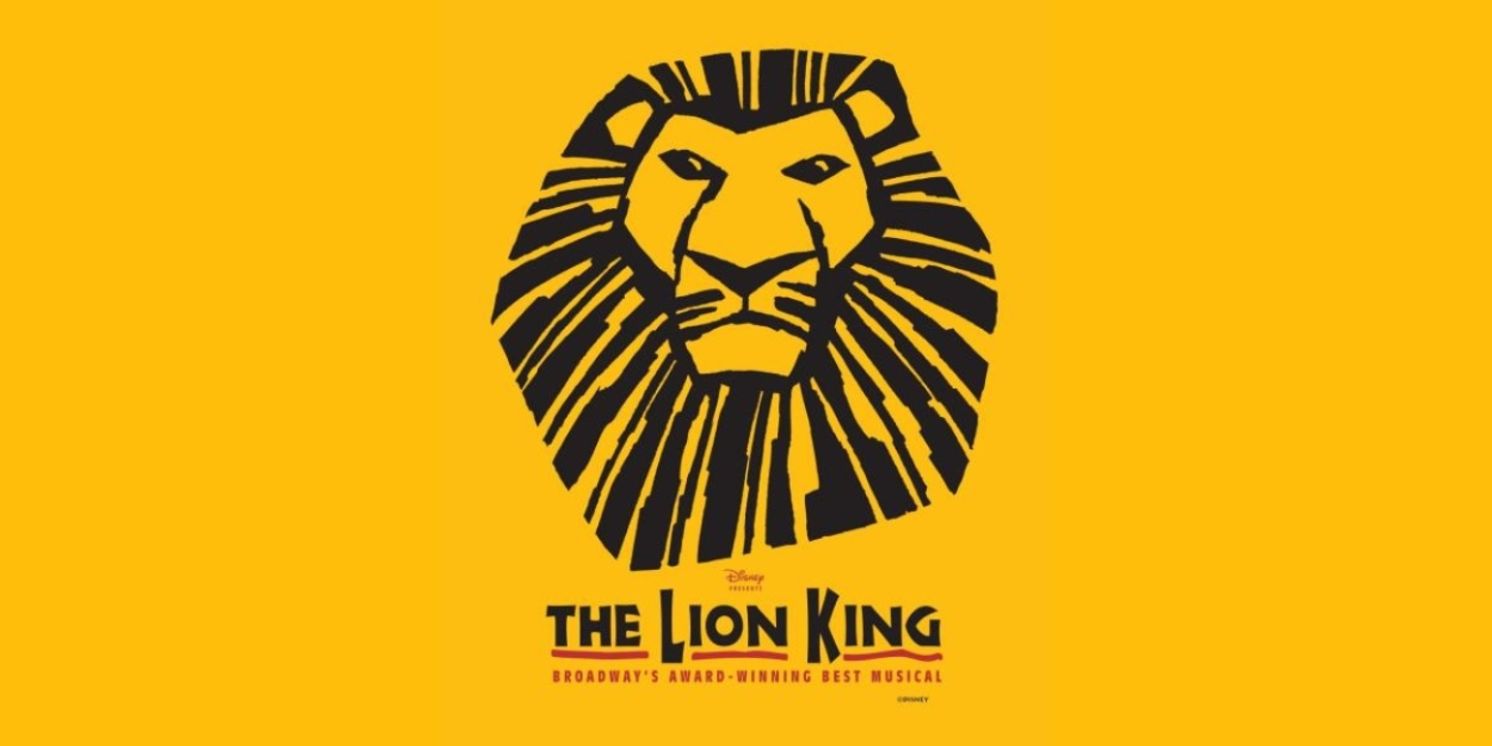
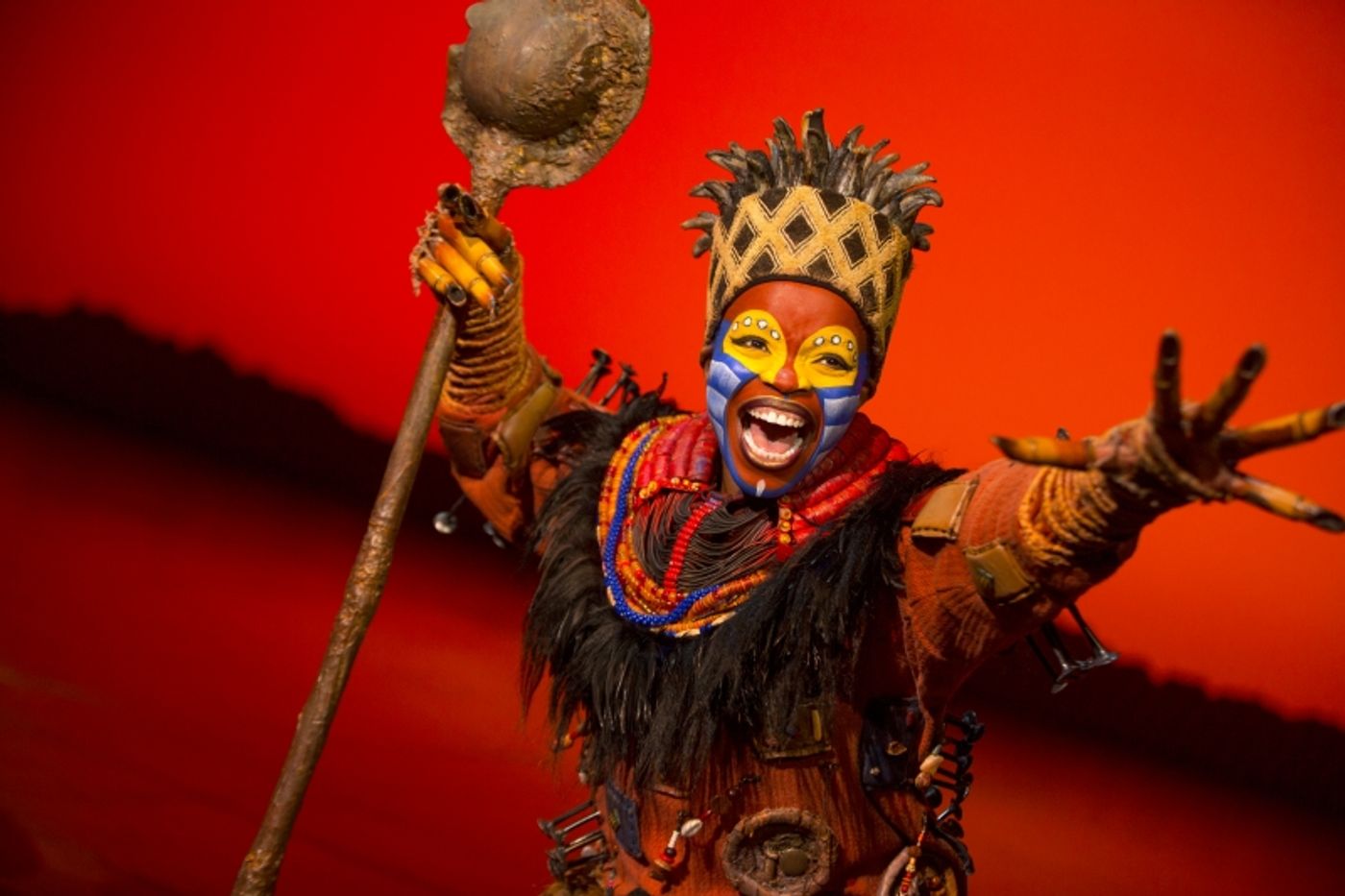
Life's greatest tragedy is the passage of time. It is a lesson we all must learn eventually. Within the proverbial circle of life, there is only a beginning and an end that occurs in the immediacy of our own lifetime. Yet, the cyclical nature of birth, death, and rebirth ensures that our spirit will carry on in legacy rather than in flesh. If we are loved, then we are remembered. And if we are remembered, then we live forever. Disney’s The Lion King transposes this message from screen to stage through an international collaboration of talent that supercedes the strength of the 1994 animated film from which it came.
As a film, The Lion King represented the apex of Disney Animation, a high point in their 1990s Renaissance of creative highs and financial success, with box-office records that went unchallenged for years. Home video sales likewise also skyrocketed in 1995, a trend that continued when the film made its debut to DVD in 2003, and once more for its Blu-Ray debut in 2011. That feat is even more amazing when one considers the fact that the very week the film hit high-definition, it had also been running in over 2,000 theatres for a 3-D reissue. By the numbers, The Lion King on its own has been one of the most successful pictures to come from Walt Disney Animation Studios, so much so that it’s inspired countless extensions of its unexpected, but profitable, media franchise: two direct-to-video sequels and just as many television series, a needless photorealistic remake, no less than five theme park stage shows, and – perhaps the most beloved of them all – a Broadway stage musical.
The journey from screen to stage was not a seamless transition, however. Indeed, pressure was on The Lion King to deliver in ways that previous Disney Theatrical Productions did not. The Walt Disney Company’s first foray into a traditional stage musical was an epically awful adaption of Snow White and the Seven Dwarfs in 1969, which was remounted a decade later at Radio City Music Hall, where it played for a year before being mercifully retired. By the time Disney Theatrical Productions officially came about in 1993, their first project involved turning the immensely popular 1991 animated hit Beauty and the Beast into a stage musical as well. Out-of-town tryouts had the show running three-and-a-half hours. Trims and modifications were finally being made before its 1994 Broadway debut… to lukewarm critical reviews, although audiences ate it up. It was decried as a great spectacle, but not great theatre – an assessment with which this critic agrees. However, it was popular, profitable, and gave them the opportunity to continue to create more productions.
As Disney Theatrical decided to look into another film to adapt for the stage, they knew they had to take risks. They knew they couldn’t simply expand the material by inserting deleted songs and elongating existing scenes from the animated film. They knew that in order to be taken seriously by the Broadway theatre community, their next show had to be innovative. It had to be unlike anything currently seen on the stage. Most of all, it had to be good. Thankfully, in The Lion King’s case, it was better than good, it was extraordinary.
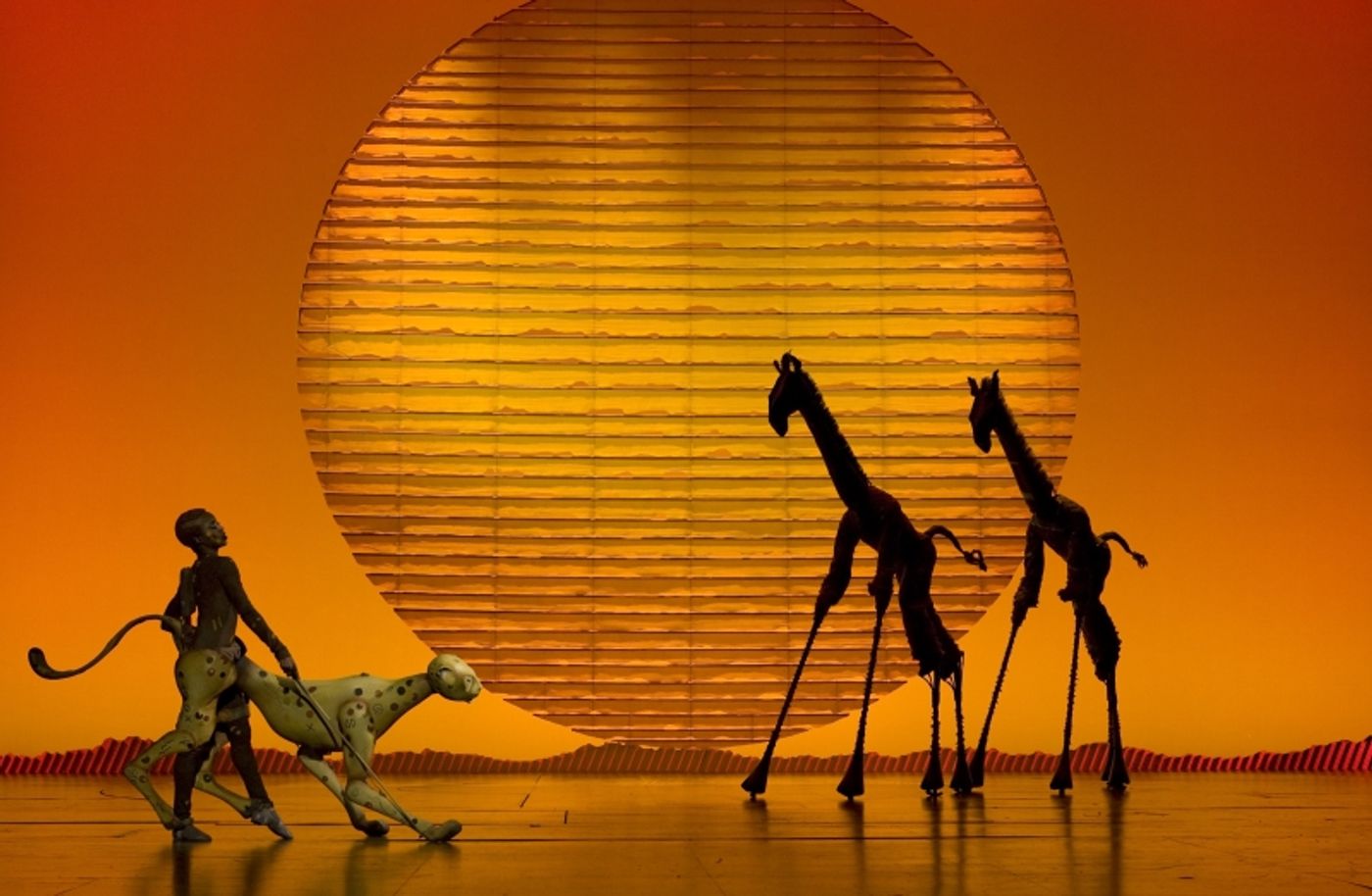
Mainstream critics and audiences of this era, by nature, had always taken exception with the success of Walt Disney Animation Studios. They were quick to shower a good film with accolades, but the stigma of being a “children’s movie” could still be found in the subtext of any assessment. Beauty and the Beast may have been nominated for Best Picture, The Lion King may have been the highest-grossing film of 1994, and The Hunchback of Notre Dame may have had the best orchestral score of any Disney film, but most adults still looked down upon the company’s success as being strictly for the kids. However, once The Lion King hit the stage in the fall of 1997, it marked a greater turning of the tide for Disney. They were suddenly one of the big kids, a major player in a very small sandbox. And it all boiled down to the talented ensemble that brought a unique, groundbreaking, and unforgettable approach to the material.
I mean that in all seriousness. Those who know me in my own life are familiar with my personal assessment of the animated film. It’s not a favorite, though I never deny it the cultural impact its had on its fans. I’ve only seen the film a mere three times in the last fifteen years, whereas I recently went through a phase of watching 1959’s Sleeping Beauty once a month for three years straight just because I wanted to. And yet within the stage musical of The Lion King, a performance brings with it a freshness and intimacy. Being in that room with this company of players simply appeals to me more than watching the animated film. The human element and connection makes The Lion King on stage much more relatable to me than on celluloid. It’s a strange dichotomy to hold in life, as I share both an apathy and a passion for this material that is dependent upon its presentation.
Yet, that is perhaps also why The Lion King on stage has become such an enduring classic for theatregoers. A movie only ever exists within the context of its creation. It remains forever in lock-step to the same scenes and sequences, acting and editing, musical numbers and cinematography. The experience of watching the film may differ over the years, but the film always remains the same: trapped within a vacuum of space and time perpetually living these lives down to the second as they had done since they were first struck to celluloid.
Stage musicals, on the other hand, adapt and conform. Players come and go. Costumes get refreshed, altered, retired. Staging can adapt to new spaces. Each room where it happens will never be the same, some element will be different enough to always ensure no two performances are the same. That is why the theatre has endured for as long as recorded history. It’s a cultural and folkloric heritage passed down, through generations, each one finding something new within its sacred words and gifting that interpretation to a fresh audience each and every time.

The story of The Lion King is largely intact on the stage as it had been in animation. For the uninitiated, it begins with a sunrise (“Circle of Life / Nants’ Ingonyama”) over a new era: the presentation of Mufasa (Darnell Abraham) and Sarabi’s (Maurica Roland) newborn cub, Simba (Julian Villela). As animals gather around Pride Rock for this important ceremony headed by the mystic Rafiki (Mukelisiwe Goba), one absence is notable: Mufasa’s own brother, Scar (Peter Hargrave). He visits his brother to chastise him for not showing respect to the next leader of the Pride Lands, although Scar is non-plussed by his threats. Rather, Scar influences his young nephew Simba to embark on a dangerous journey to the Elephant Graveyards, an outland beyond the borders of the kingdom. Simba asks his friend and betrothed partner Nala (Ritisha Chakraborty) to accompany him, although they must first elude the watchful eye of Mufasa’s faithful majordomo Zazu (Drew Hirshfield) (“I Just Can’t Wait to be King”). In the Elephant Graveyard, hyenas Shenzi, Banzai, and Ed (Martina Sykes, Forest VanDyke, and Sam Linda, respectively) taunt both cubs (“Chow Down”), who are soon rescued by Mufasa and Zazu.
Mufasa has a stern discussion with Simba about the danger he was in, as well as Mufasa’s own fear of losing his son (“They Live in You”). Meanwhile, it is revealed that Scar has allied himself with the hyenas, natural enemies to lions, in order to stage a coup for the kingdom (“Be Prepared”). They manipulate a herd of wildebeests to stampede into a canyon in which Simba has been innocently waiting for his father. Mufasa rescues Simba, but in his own attempt to escape, Scar allows his own brother to fall into the stampede. Distraught over his unintended role in Mufasa’s death, Simba runs away at the insistence of his trusted uncle. Scar then orders the hyenas to kill him, though unbeknownst to Scar they merely threaten him to never return.
Before buzzards can feast on the near-lifeless body of a weakened Simba, he is rescued by fellow outcasts Timon and Pumbaa (Nick Cordileone and Danny Grumich, respectively), who take him to a lush jungle oasis to live a peaceful lifestyle (“Hakuna Matata”) consisting of no worries, an all-bug diet, and running away from problems. Time passes as Simba grows up (Erick D. Patrick), unaware that Scar’s hostile takeover of the Pride Lands has lead to overhunting of the herds, which in turn leads to hunger for the pride and decay of the kingdom (“The Madness of King Scar”). The hyenas are beginning to question Scar’s effectiveness as leader, while a now-adult Nala (Thembelihle Cele) has run away to search for help (“Shadowland”). While loafing with his two buddies in a river that becomes near-fatal for Timon, Simba has a traumatic flashback to his father’s death, as he realizes he never truly faced the consequences of that event (“Endless Night”). Nala then discovers Simba is alive and well in the oasis, but their happy reunion (“Can You Feel the Love Tonight”) is cut short as he rejects her plea to return to Pride Rock and re-claim his birthright.
The mystical Rafiki approaches Simba, telling him that she knew his father. Mufasa then appears to Simba in the night sky, imploring him to not forget his role and his purpose (“He Lives in You”). This gives Simba incentive to return, to confront Scar, and take back the kingdom. All the while, Nala, Timon, Pumbaa, and Rafiki gather up the lionesses to fight Scar’s hyena allies. In the battle, Simba then reveals his role in Mufasa’s death, and the guilt he carried for years because of it. Scar, thinking he has the upper paw, then reveals to Simba that he – not Simba – had been responsible for killing Mufasa all along. This confession gives Simba the strength to overpower Scar, although he does offer mercy to his uncle. Rather than take it, Scar attempts to strike back, only to fall to the depths and victim to the hyenas. Simba then takes up the mantle as Lion King (“King of Pride Rock”), and time passes as we return to Pride Rock one year later to see the presentation of his and Nala’s newborn cub. Truly, the “Circle of Life.”
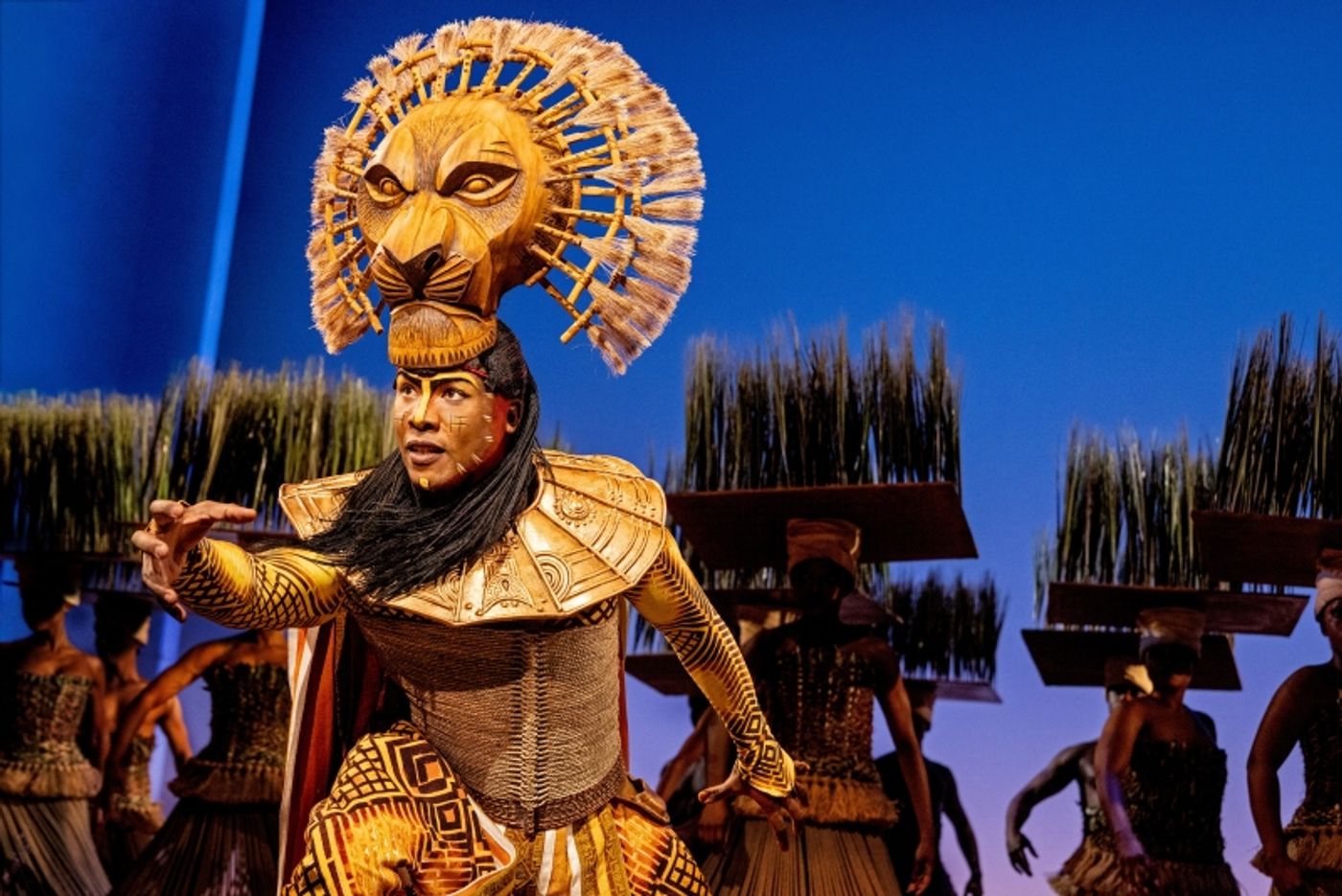
There are a few notable additions made to the stage version, including that poignant scene showing Simba’s post-traumatic stress disorder after the river accident, but the stage play remains roughly 85% faithful to the scripting of dialogue from the 1994 film. And yet, as I said before, watching this all unfold in a theatre is a vitally different and superior experience to watching the film. One reason that the stage version feels like a wholly superior experience can be found in its approach of blending different cultures into one cohesive experience for the audience.
Much of this can be attributed to the hiring of Julie Taymor as director. At the time, Taymor was a relative unknown outside of the Shakespeare stage community. She had mounted several productions at Off-Broadway's Theatre For a New Audience, though had yet to break out on the Great White Way. Yet her distinctive vision and approach to Shakespeare – check out her 1999 film adaptation of Titus Andronicus – made her the perfect candidate for Disney’s own “Hamlet in Africa.” Granted, even that moniker does not truly befit The Lion King, whose various story changes since its first 1989 development has led to continued comparisons and inspirations, but not outright or direct adaption of Shakespeare, although the filmmakers do admit there are intentional similarities. However, it was Taymor’s creative blend of the pathos of a Shakespeare play like Hamlet with the puppetry of an Indonesian theatre like her own Teatr Loh to create a visionary approach to the African lore and story of The Lion King.
The puppetry never goes for full coverage of the performer. Rather, it’s a delicate and finely-skilled balance that allows a performer to become their characters, either through the flexibility and manipulation of artificial limbs or controlling a whimsical machine around them with finesse and ease. Nobody gets lost or hidden in their character the way that, say, a Christmas panto would hide two people in an obvious horse costume. Rather, their relationship with their own costume becomes a commentary and example of the relationship between man and nature, and the responsibility to make it a mutually beneficial one for both. Taymor had an active hand in designing these costumes, reflecting in 2011: “The dimensionality of theatre allows the audience to focus on the puppet and forget about the puppeteer. We would be able to do this on the stage, and you’d enjoy the art of seeing how the actor moves [the puppet], but then you’d believe in [the puppet] as well.”
The mechanics of this sort of puppetry alludes to the illusion of life, a basic principle of animation, and pulls back that curtain. We are meant see the gears, we see the wires, we see the manipulation. And it creates an all-new fluidity, an all-new language of movement. At one key scene in the production, the mere removal of part of this costume becomes a direct narrative choice that allows the audience to better understand Mufasa’s own characterization. It’s a visually-metaphoric moment as the actor removes the lion mask atop his head. It signifies that he is not speaking to Simba as the King, but as a Father. And it carries with it a newfound understanding of how the mask becomes both his identity and his vulnerability. Nowhere else in the play does anyone intentionally remove their puppetry or part of their costume, thus turning this moment into a truly memorable one.
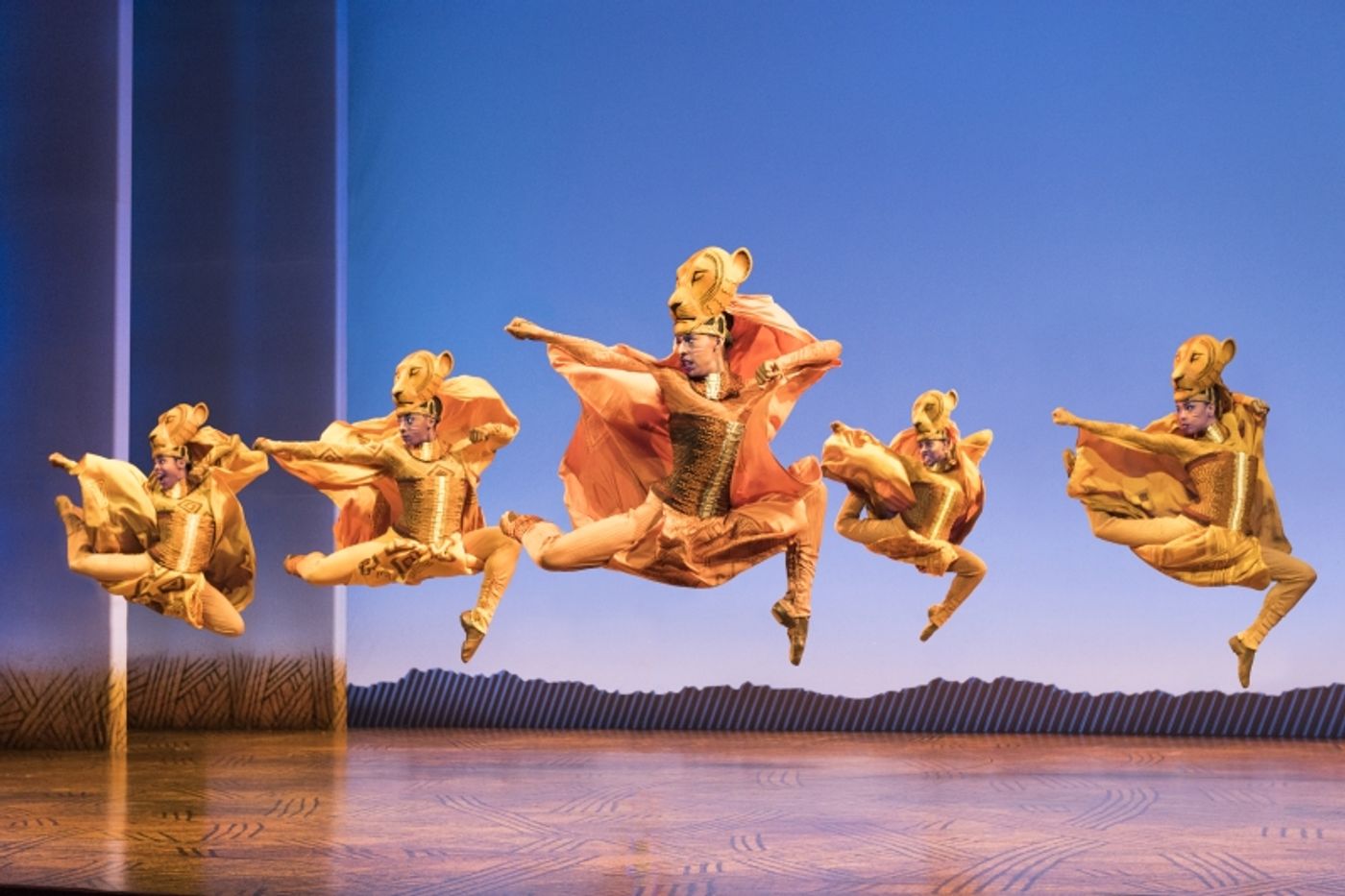
The entire design of the stage production draws inspiration from so many sources, although it ensures the story’s African lore and culture are prevalent. This is most evident within the score and songs for The Lion King. Original film composers Elton John, Tim Rice, and Lebo M returned to add new songs to the musical. John & Rice’s additions are more of the Disney variety, while Lebo M modified and expanded original songs he created for the 1995 sequel soundtrack Rhythm of the Pride Lands into show tunes now integral to the narrative. Perhaps the strongest of those is “They Live in You” and its follow-up “He Lives in You, two songs that bring full circle the themes of parenthood and legacy.
For all the recognition given to The Lion King, how it deals with the death of a parent has always been the linchpin of its narrative and emotional maturity for its audience. As children, we believe our parents to be invincible, that they could live forever, because they always had. Yet as we grow older, so, too, do our parents. And that invincibility gradually chips away. Reality settles in through unexpected ways. One day, we’ll take care of them the way they took care of us. We’ll hold their hand to guide them up the staircase the way they held ours in our first steps. Then, in the blink of an eye, we may become parents ourselves. And we suddenly now see the world as our parents did: a dangerous place where any threat to our child must be met with a fierceness and strength, that they worry about a threat because we’re already protecting them. The Lion King brings about its most dramatic conflict to the narrative by having Simba lose his parent too soon, at an age when he cannot fully comprehend the loss. This makes one of the most jovial tunes in the story, “I Just Can’t Wait to be King,” a bittersweet dramatic irony as becoming King can only come about through the loss of his father. Yet it is this trauma that prepares Simba to fully understand his purpose, even if – like any guilty victim – he first attempts to run away from it.
Bringing this trauma to pitch-perfect performance are two key performers. Young Simba is played by Orlando’s own Julian Villela, who alternates throughout the tour with Bryce Christian Thompson. The Lion King marks Villela’s debut to the National Tour circuit, although he’s already familiar with Dr. Phillips Center thanks to his own previous work here in local theatre spaces, including a school production of The Lion King. Getting the chance to play one of the most iconic characters in Disney history, right down the road from one of Disney’s best theme park stage shows (hello, “Festival of the Lion King”!), feels like a most welcome and worthwhile marker in this young artist’s journey. Likewise, Adult Simba is played by Erick D. Patrick, a veteran of both touring and regional productions, having been with the touring production of The Lion King since September of last year. Patrick’s approach to Simba is one that heightens the internal conflict. His anguish and freeze-up during Timon’s river accident reveals new layers to the character that I had not picked up before the last time I saw this production.
Nala also features two performers in the role. Tonight’s performance saw Ritisha Chakraborty as Young Nala, while Adult Nala was played by performer Thembelihle Cele. Chakraborty has amazing chemistry with Villela, the two’s playfulness feels authentic and endearing, especially as Patrick and Cele must recapture that same magic when their two characters meet again. Cele has worked on The Lion King’s tours not just in the US, but overseas as well in the United Kingdom and Ireland. A South African native, she focuses on Nala’s strength – a self-appointed leader among the lionesses who has earned a proverbial mane with her take-charge attitude.

Performer Mukelisiwe Goba also hails from South Africa, bringing an authenticity to Rafiki’s role that has taken her not just on tour, but to Broadway itself as well. Her continued familiarity with the role never translates to a boredom or tiredness with the same lines or movement. She relishes her moments in the spotlight, creating within Rafiki a more fleshed-out character whose purpose feels more impactful than the “magical Negro” tokenism that Rafiki otherwise faced in the animated film. As the performer who opens and closes the show, Goba’s vocals stand out eternally as one of power and vitality. She becomes emblematic of the motherland for all characters on that stage. Thus, her role carries with it a sense of nature healing itself through the actions of those she influences.
Of course, it would not be The Lion King without the importance of the Biblically-allegorical brothers Mufasa and Scar. Darnell Abraham portrays Mufasa for much of the tour’s stop in Orlando before passing the torch to Gerald Ramsey. He carries within his voice a stern authority figure, yet as mentioned before, knows when to soften it. The nighttime walk home from the Elephant Graveyard will probably stay with audiences for a long time, as Abraham makes those same familiar words that James Earl Jones first uttered in 1994 feel fresh, raw, and just as heartbreaking. As the spare heir Scar, Peter Hargrave turns up the camp to the character, but never offensively. He looks to making Scar’s ambition a relatable journey, even if the character goes about it in the wrong way at every step of the narrative. Hargrave also ensures that while Scar is a threatening figure to those on the stage, those in the audience will love him through his calculatedly off-beat performance. Heck, one of his best moments comes when he isn’t even in the spotlight of a scene.
During the menacing “Be Prepared” villain’s song, a cadre of male Hyenas come out for a dance break that seems to knowingly wink at that hidden queer-coding of Scar. It’s such an amusing arrow pointed to Scar’s unspoken sexuality, as Hargrave leans into that repressed attraction by showing – off center to the sidelines – a vested interest in virile, shirtless men gyrating amidst strobing lights. By Act Two, when “The Madness of King Scar” comes along, his interest in Nala stems less from attraction and more from securing his bloodline. Yet Scar’s own question to prompt that song, “Why am I not loved?”, points more towards the loneliness he also feels as an outsider to the heteronormative behaviors of those around him. However, even though such a line may prompt sympathy for the devil, at the end of the day, Scar is a murderer. By the story’s end, he faces the consequences for his actions in more ways than one. Mercy was Simba’s to give, but justice was nature’s to serve. The ambiguity of how Scar descends from Pride Rock to his death leave it up to the audience as to whether Simba struck him or Scar slipped of his own accord.
The Lion King is a testament to how humans can extrapolate so many disparate art forms, so many complex character arcs, and so many culturally-unique aesthetics and practices in order to create a full, cohesive story that appreciates each one without ever sacrificing the integrity of the sources from which they came. It is, perhaps, the first globally-represented stage musical. The influences from African lore and artistry, the mechanics of Indonesian puppetry, the pathos of Shakespearean drama, the timelessness of Disney magic, and the eternal themes of life and death. All of it, captured in a multi-generational tale about family, as told through allegorical representations of animals. Music by a gay Englishman and an expatriate South African. Libretto by a Disney director and children’s television screenwriter. Direction by Julie Taymor, decades before her work here earned her the status of Disney Legend.
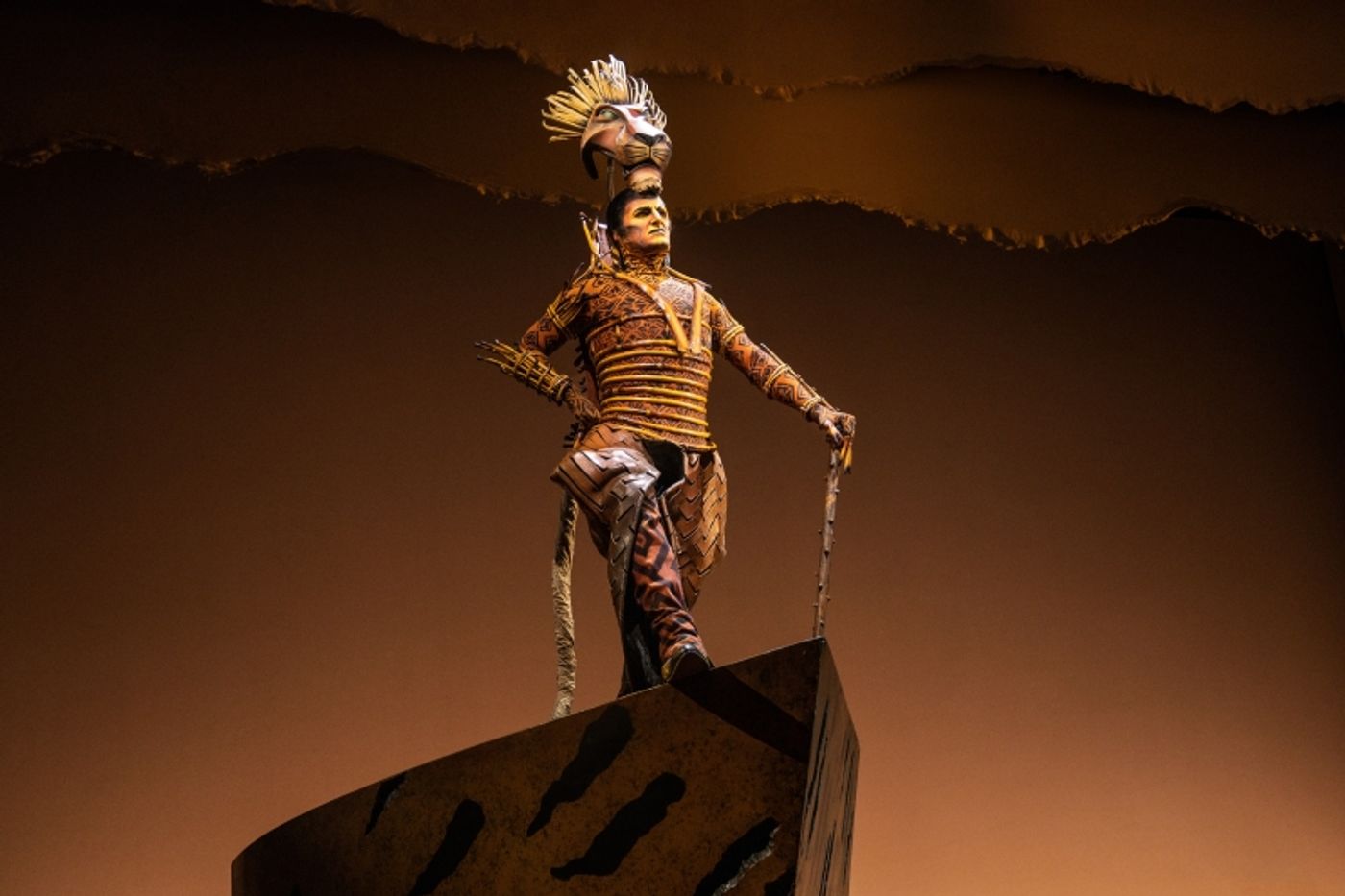
So beloved and so popular has The Lion King been that its continued production since 1997 has made it the third longest-running show in Broadway history. The touring productions are now on its fourth leg, dubbed the Rafiki Tour. And they know their audience. Four weeks in Orlando right before the summer crowds descend upon Walt Disney World allows plenty of locals and vacationers a chance to attend a show, maybe even more than once. And the tour knows how to do this show in record time. I’d complained previously about how some touring productions seem to just rush through scenes because they’re playing to a time-limit rather than to the material. The Lion King makes this finessed and compact nature feel seamless. Since 2010, modifications made on Broadway (deletion of the song “Morning Report” and a few other extraneous scene moments) have been adopted by the tour as well. This means that both acts run roughly 65 minutes each for a total experience of about two hours and ten minutes in total. That’s forty minutes longer than the original film, but what’s gained here is sheer pageantry and spectacle that celebrates Black excellence, brings attention to centuries old mythologies, and pays tribute to the animated film that took the world by storm over thirty years ago now.
I don’t know when my next viewing of this musical will be. And I don’t know what circumstances they may be under. Whether I review it again for Broadway World or attend as an enthused theatre patron remains to be seen. It’s a curve in my own circle of life that I have yet to make a left or right turn upon. But last night’s viewing for Media Night at Dr. Phillips Center, if I may get personal for a moment, will probably always be my favorite for years to come.
My father’s birthday was last Saturday. We celebrate it every year as I’ve done since I was born, although when I was fourteen, that celebration was marred by tragedy the next day as his own father – my paternal grandfather, my Lolo Pepe – passed away in the early hours of the morning. Every year since then, although we celebrate my father’s birthday, there is a bittersweet reminder the next day of what we also lost. It’s been looming over my head a lot this year, I think my own internal reconciliation that one day, I’ll celebrate a birthday without my father. But I’ll not worry about that for the near future. There are plenty more birthdays under the sun for the both of us.
Whatever legacy I leave behind, I know that who I am today was shaped by both my parents through the love and the care they gave to me as a child and well into adulthood. There was a contentment to last night’s show, a feeling that made me connect with this musical more than I ever anticipated. For much of the night, I wasn’t a critic observing a production. I wasn’t a Disney Adult enjoying a beloved intellectual property. Rather, I was simply a son creating a new memory with his father. And that will be his legacy, as much as it is mine. Life’s greatest tragedy is the passage of time, but that won’t stop us from enjoying the journey while we’re still here. Happy Birthday, Dad, I love you!
THE LION KING plays April 23 through May 18 at Dr. Phillips Center. Tickets can be acquired online or at the box office, pending availability.
Reader Reviews

Videos

